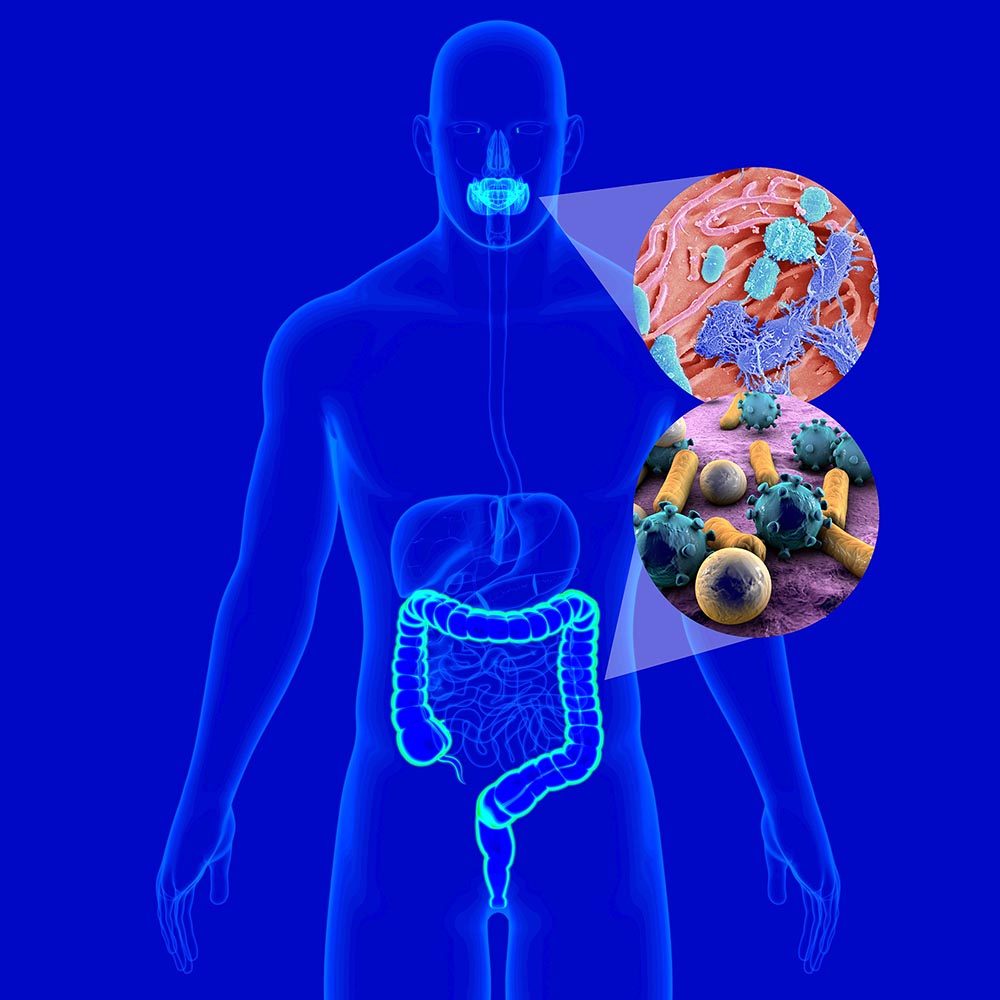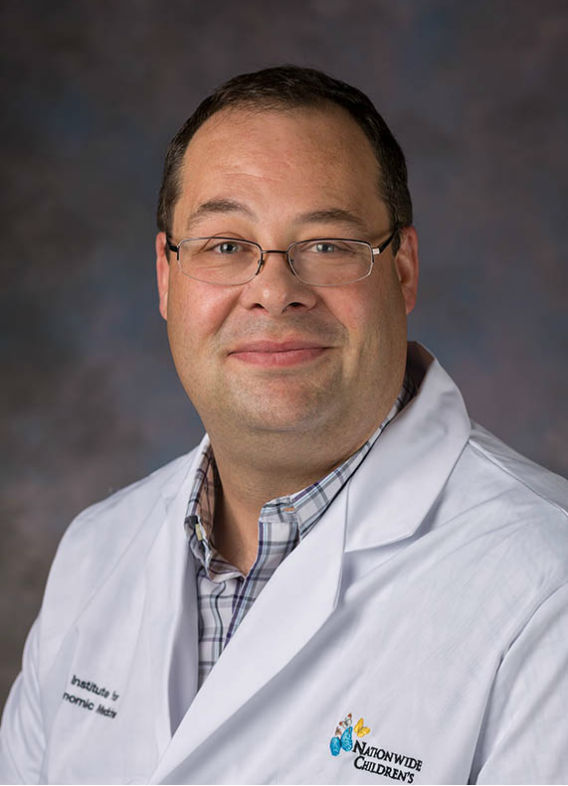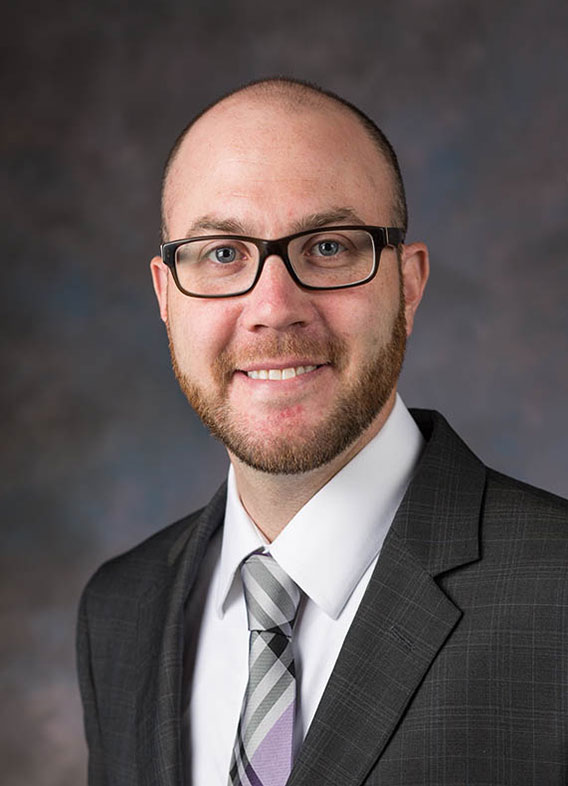Oral-GI Microbiology Research Affinity Group

The Oral and GI Microbiology Research Affinity Group (OGM RAG) at Nationwide Children’s Hospital which is housed in the Abigail Wexner Research Institute in the Center for Microbe and Immunity Research will bring together like minded clinicians and basic scientists that are actively involved in research in oral (e.g. tooth decay and periodontal disease) and gastrointestinal (e.g. inflammatory bowel disease, necrotizing enterocolitis) microbiology as it affects human disease. Importantly, these disciplines lead the field of human microbiome (the host microbial communities) research and how it contributes to general health. Both disciplines have made great progress in understanding how microbial community architecture can either benefit (eubiosis) or harm (dysbiosis) the host, strongly indicating that the microbes that populate our bodies contribute directly to our health. Further, the OGM RAG will also seek out contributions from other research disciplines where the microbiome plays an active role. The OGM RAG will thus create a university-wide network to leverage expertise and treat disease.
The OGM RAG is involved in multiple activities. In addition to quarterly meetings, the OGM RAG supports cross discipline multi-principal investigator projects particularly between basic researchers and clinicians to optimize translational outcomes. This creates an opportunity to train students across disciplines to prepare a new generation of investigators in these cutting-edge fields. Thus, the OGM RAG will bring this new, blended expertise from the bench to the bedside as we now understand that we, the host, are strongly affected by the microbes that live with us.

Michael T. Bailey, PhD
Director
Topics of study: Studies in the Bailey Lab seek to understand the impact that the intestinal microbiota have on the local immune system, and on immune reactivity at systemic sites, particularly during periods of psychological stress. Studies are primarily being conducted in pre-clinical animal models, such as models of inflammatory bowel disease, with the goal of translating these findings into meaningful clinical studies in human patients.
Example of OGM RAG-Related Project: We are interested in the dynamic interactions between host physiology and the gut microbiota. As a part of the Oral-GI Microbiology RAG, we are studying host-microbe interactions as they pertain to diverse diseases and conditions, including acute chest syndrome in children with sickle cell disease, necrotizing enterocolitis (collaboration with the Goodman and Besner labs), responses to antibiotics and vaccines (collaboration with the Goodman and Bakaletz labs), and inflammatory bowel disease (collaboration with the Maltz lab). Our goal is to understand how to target the gut microbiome to develop microbiome-based therapies.

Topics of study: Dr. Gail Besner is a surgeon-scientist at Nationwide Children’s Hospital and The Ohio State University. She holds the H. William Clatworthy, Jr. Chair in Surgery. She is a member of the Center for Perinatal Research at the Research Institute at Nationwide Children’s Hospital. Dr. Besner established a basic science research laboratory in pediatric surgery at Nationwide Children’s Hospital in 1991, and her research has received continuous funding from the National Institutes of Health for the past 30 years. Her research focuses on identifying novel therapeutic strategies to protect the intestines from intestinal injury including necrotizing enterocolitis (NEC). She is a scientific Co-Founder of Scioto Biosciences, Inc., whose goal is to initiate clinical trials of Lactobacillus reuteri delivered in a protective biofilm state for the prevention of NEC. She was recently chosen as the 2024 Nationwide Children’s Hospital Allen Distinguished Scholar in Pediatric Research, awarded for scientific innovation and achievement in advancing the understanding, diagnosis, treatment, and prevention of childhood disease. In addition, she has been awarded the 2024 Drake Medal from the University of Cincinnati College of Medicine, the highest recognition the college can bestow, awarded for outstanding scholarly achievements with major significant contributions to medical research, and very recently has earned the most coveted and highly prestigious American Surgical Association 2025 Medallion for Scientific Achievement.
Example of OGM RAG-Related Project: Probiotics are bacteria that can exert beneficial health effects on the host. The Besner Lab and its collaborators from the Center for Microbial Pathogenesis (Steven Goodman, PhD and Michael Bailey, PhD) have developed a probiotic delivery system that has demonstrated efficacy in significantly reducing NEC incidence in both mouse and rat pup NEC models. The system involves delivery of Limosilactobacillus reuteri in its biofilm state by incubation on biocompatible microspheres that can be loaded with beneficial prebiotic cargo.
In addition to demonstrating efficacy in rat and mouse models of NEC, the teams have tested its efficacy in an enteral feed-only piglet (large-animal) model of NEC using a novel definitive scoring system, and have confirmed superior performance of Lr in its biofilm versus planktonic state in protection of piglet intestine from NEC.
NEC is a disease of the gut-brain axis. It is well known that survivors of NEC have neurodevelopmental delays. We have been able to demonstrate that not only does Lr in its biofilm state protect the intestines from acute NEC, but it protects the brain from injury in survivors of NEC. Autism is another disease of the gut brain axis. In a Phase 1 human clinical study conducted through Scioto Biosciences, it has been demonstrated that Lr in its biofilm state demonstrates potential efficacy against autism. The Besner/Bailey/Goodman labs are investigating this further in a murine model of autism.

Topics of study: The Gunn Laboratory studies the pathogenic mechanisms of acute and chronic infections caused by the facultative intracellular pathogen Salmonella Typhi/Typhimurium. They focus on virulence gene regulation, chronic infection, biofilm formation, the host-pathogen interface and the development of new therapeutics/vaccines.
Example of OGM RAG-Related Project: Dr. Gunn’s research is particularly focused on bacterial biofilms and regulatory systems that control virulence and modifications of the bacterial cell surface in the context of acute and chronic infections. The Gunn lab developed mouse models for chronic Salmonella infection of the gallbladder and uses this model to study both host and microbial factors that are responsible for establishing and maintaining asymptomatic, prolonged infection of this organ. Biofilm formation on gallstone surfaces was demonstrated to be the key mechanism of gallbladder carriage. Targeting Salmonella gallbladder carriage, we have identified new small compounds that inhibit biofilm formation and are testing additional therapeutic interventions to eliminate gallbladder/gallstone colonization. We are collaborating with the Lauber lab on understanding the gallbladder microbiome and its role in chronic infection.

Vanessa L. Hale, MAT, DVM, PhD
Topics of study: The Hale Lab examines host-microbiome-disease interactions with the goal of understanding how host-associated microbial communities can shape disease susceptibility and pathogenesis. We study diseases that affect both humans and animals and use an ecological framework to evaluate microbe-microbe and microbe-host dynamics.
Example of OGM RAG-Related Project: One of our current projects focuses on characterizing the gut and urine microbiota associated with bladder cancer in dogs. Dogs, like humans, can get bladder cancer, or urothelial carcinoma, and studying cancer in dogs can help us improve both animal and human health. In humans, a major risk factor for the development of urothelial carcinoma is smoking. In dogs, a major risk factor is herbicide exposure. Polycyclic aromatic hydrocarbons (PAHs) are chemicals common to both cigarette smoke and herbicides. Our work examines if and how microbes in the gut and bladder may be metabolizing PAHs in relation to bladder cancer. Ultimately, we want to determine if the gut or urine microbiota can help us predict, prevent, or treat diseases like bladder cancer.

Topics of study: The Kaspar laboratory focuses on supragingival biofilms from the oral cavity to study how interactions between microbes and their environment alter bacterial behaviors. The lab studies oral bacteria within mixed-species settings, as well as the impact of human saliva on bacterial physiology. The long-term goal is to develop novel strategies, such as pre- or probiotics, that selectivity prevents the outgrowth of odontopathogens such as Streptococcus mutans.
Example of OGM RAG-Related Project: Different bacterial strains isolated from the oral cavity display heterogeneity in various phenotypes, even between strains of the same species. Select phenotypes may be advantageous in preventing the dysbiosis of microbial communities observed during the development of dental caries (tooth decay). We are working in collaboration with Dr. Kyulim Lee, Dr. Samantha King and Dr. Gina Lewin to isolate, catalog and characterize oral bacterial isolates from different sites in the oral cavity, in patients with known health status, to observe how phenotypic heterogeneity between strains impacts cooperative/antagonistic behaviors between re-assembled interspecies interactions.

Topics of study: The King Laboratory focuses on defining interactions between streptococcal species and their hosts in the context of both health and disease. Specifically, our work is focused on defining the mechanisms by which these species bind relevant host surfaces with the long-term goals of improving health and reducing the burden of disease.
Example of OGM RAG-Related Project: We recently identified highly unusual monolateral fibrils on the surface of the oral bacterium Streptococcus oralis subsp. dentisani. This bacterium is associated with oral health but can enter the bloodstream and cause infective endocarditis. We have determined that the fibrils are serine rich repeat proteins that bind both bacterial and host surfaces. Our current studies aim to define not only the mechanisms by which these fibrils mediate binding, but also those which result in the monolateral distribution. These studies will define the first binding mechanisms for this subspecies and increase our understanding of bacterial protein secretion and distribution.

Topics of study: The Lauber Lab focuses on how microbial community function affects health and the development of new methods to interrogate the microbiome. Our lab uses meta’omic approaches with in vitro and in vivo models to understand how microbiome function varies across individuals and diseases states.
Example of OGM RAG-Related Project: We are interested in describing the microbiome in terms of functional capability in addition to the traditional ‘who is there’ approach to better understand how microbial diversity drives host responses. Our goal is to use these data to define what constitutes a healthy microbiome and translate these observations into treatments for acute and chronic diseases.

Topics of study: Our human microbiota consists of complex communities where microbial interactions modulate bacterial behavior and influence human health. The Lewin lab is interested in understanding the role of microbial interactions in polymicrobial sites, including the oral microbiome. We use cutting-edge computational techniques and wet-lab approaches to study these interactions in the context of microbial diversity and the dynamic infection environment.
Example of OGM RAG-Related Project: Detailed experimental work has shown that microbe-microbe interactions alter the progression of disease in the oral cavity. However, in most cases, these interactions were studied using representative bacteria, despite extensive strain- and species-level bacterial diversity in the human cavity, both within and between individuals. Therefore, a current focus in our lab is to understand the role of this strain- and species-level diversity in microbe-microbe interactions. We are building a large strain collection of oral bacteria and assaying how strain-level diversity impacts interactions between oral pathogens and members of the healthy microbiota. By defining the generalizability of microbe-microbe interactions, this work will advance our understanding how microbial interactions shape health in the context of the diverse oral microbiota.

Topics of study: The Maltz Laboratory focuses on the effect stressor exposure has on intestinal inflammation via alterations in the gastrointestinal microbiome and metabolome. Our studies utilize murine models of IBD and prospective clinical studies in pediatric Inflammatory Bowel Disease patients.
Example of OGM RAG-Related Project: As a part of the Oral-GI RAG and in collaboration with Dr. Bailey and Dr. Lauber we are investigating whether biofeedback therapy which is a stress reduction therapy can impact disease activity in pediatric Crohn’s disease patients and attenuate the stress related effects in the microbiome and metabolome. Our goal is to identify a complimentary therapy that can attenuate stress related effects on inflammation in order to further improve Crohn’s disease activity. In addition, identify a biomarker/signature that can predict which patient population would most likely benefit from this stress reduction therapy.

Jenessa A. Winston, DVM, PhD, DACVIM
Topics of study: Dr. Jenessa Winston is an assistant professor at The Ohio State University College of Veterinary Medicine. As a veterinarian clinician scientist, Dr. Winston’s strives to enhance animal and human health through translation scientific discoveries. Her primary research interests include microbe-host interactions during health and disease and rational manipulation of microbial ecosystems including interventions such as fecal microbiota transplantation.
Example of OGM RAG-Related Project: Obesity is a growing epidemic in humans and companion animals. Evidence is mounting that the intestinal microbiota contributes to an “obesogenic” phenotype, and rational manipulation of this ecosystem may confer a health benefit. We aim to provide a comprehensive scientific and clinical assessment of the efficacy of fecal microbiota transplantation (FMT) as an adjunctive therapy for canine obesity management. We hypothesize that FMT will amplify weight loss compared to the use of standard dietary obesity management. To test this, we will conduct a 24-week randomized, double-blinded, placebo controlled, cross-over clinical trial in client-owned obese dogs. Using an integrated multi-omics approach the intestinal microbiota will be comprehensively evaluated every 6 weeks via16S rRNA gene sequencing and global untargeted metabolomics. Project execution will provide evidence for FMT efficacy in obesity management and facilitate rational manipulation of the intestinal ecosystem into a personalized medicine approach for dogs suffering from obesity.

Topics of study: Vanessa Varaljay, PhD, is currently the Chief Research Officer for the Infectious Diseases Institute. She directs business development efforts in infectious diseases with government, industry and foundation sponsors, interfacing closely with faculty and internal university organizations to deliver high-value research and educational opportunities. Dr. Varaljay has extensive scientific leadership experience in microbiology, functional genomics and next generation sequencing, as well as managing research projects and interdisciplinary teams. Dr. Varaljay co-directs the IDI’s Genomics and Microbiology Solutions Laboratory (IDI-GEMS). The IDI-GEMS is committed to facilitating interdisciplinary research collaborations by providing consulting, research design and testing services with emphasis on microbial metagenomic sequence analyses.
Areas of Expertise:
- Microbiology
- Functional Genomics
- Next-Generation Sequencing
